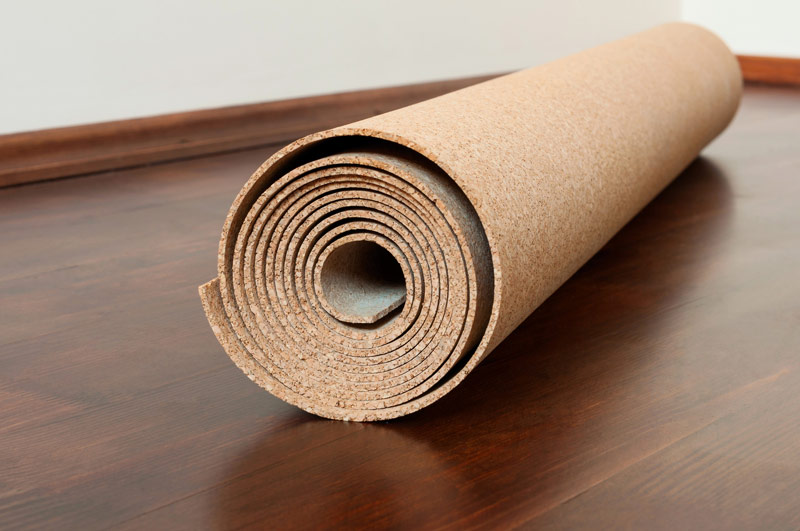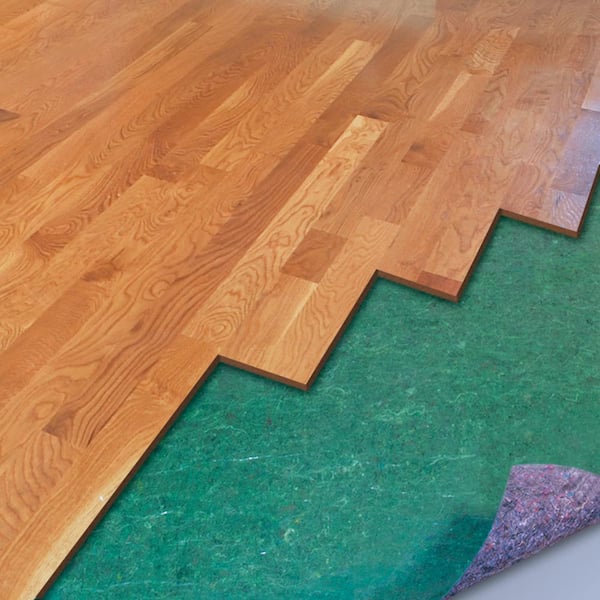Under vinyl flooring, it’s essential to use an underlayment to enhance performance and durability. Common underlayment materials include foam, cork, rubber, and felt. These provide moisture protection, noise reduction, and cushioning. Choose based on specific needs and follow manufacturer guidelines for installation.
Underlayments are materials installed beneath the primary flooring surface, providing support, stability, and additional benefits. When it comes to vinyl flooring, there are several types of underlayments to consider:
Foam Underlayments
These lightweight materials, typically made of polyethylene or polypropylene, offer excellent moisture resistance and help to smooth out minor imperfections in the subfloor.

Cork Underlayments
Known for their natural resilience and sound-absorbing properties, cork underlayments provide both cushioning underfoot and thermal insulation. They are also eco-friendly, making them a popular choice for environmentally conscious consumers.

Rubber Underlayments
Highly durable and offering superior noise reduction, rubber underlayments are ideal for high-traffic areas or spaces where sound transmission between floors is a concern. They provide excellent cushioning and help to minimize impact noise.

Felt Underlayments
Made from recycled fibers, felt underlayments offer a soft cushioning effect underfoot and help to reduce noise. They are also moisture-resistant, providing an added layer of protection for the vinyl flooring.

Plywood Underlayment
If your subfloor is uneven or made of a material that is not suitable for direct vinyl installation (such as concrete), you may need to install plywood underlayment first. Make sure the plywood is properly secured and that seams are staggered and properly fastened.

Choosing the appropriate underlayment for your vinyl flooring is crucial for ensuring optimal performance and longevity. Consider the specific needs of your installation area, the type of vinyl flooring being used, and any additional requirements such as moisture control or sound insulation. Factors to keep in mind when selecting underlayment materials include durability, eco-friendliness, and ease of installation.
Benefits of using underlayment
Using underlayment under vinyl flooring can offer several benefits, contributing to the overall performance, comfort, and longevity of the floor. Here are some of the key advantages:
Smooth Surface: Underlayment helps to create a smooth and even surface for the vinyl flooring. This is particularly important when installing vinyl over uneven subfloors, as it helps to prevent imperfections from telegraphing through the vinyl surface.
Sound Reduction: Underlayment can dampen sound transmission, reducing the noise created by foot traffic and other impacts. This is especially beneficial in multi-story buildings or areas where noise reduction is a priority, such as bedrooms or living rooms.
Comfort Underfoot: Underlayment provides a cushioning layer beneath the vinyl flooring, enhancing comfort underfoot. This is particularly appreciated in areas where people stand for extended periods, such as kitchens or laundry rooms.
Moisture Protection: Some types of underlayment offer moisture resistance, providing a barrier between the vinyl flooring and any moisture present in the subfloor. This helps to protect the vinyl from potential water damage, extending its lifespan.
Thermal Insulation: Certain underlayment materials, such as foam or cork, offer thermal insulation properties. They help to keep the floor warmer in cold weather, improving overall comfort and reducing energy costs.
Subfloor Protection: Underlayment can help protect the vinyl flooring from minor imperfections or irregularities in the subfloor. It acts as a buffer, preventing the transfer of any sharp objects or rough surfaces that could damage the vinyl over time.
Easy Installation: Underlayment is typically easy to install, often coming in rolls or sheets that can be quickly laid down before installing the vinyl flooring. This can save time and effort during the installation process, especially for DIY projects.
Enhanced Durability: By providing additional support and stability, underlayment can help enhance the overall durability of the vinyl flooring. It reduces the risk of damage from heavy foot traffic, furniture, or other impacts, prolonging the life of the floor.
Installation Guidelines
Proper installation of underlayments is essential for maximizing the benefits they provide to your vinyl flooring. Follow manufacturer recommendations and guidelines carefully to ensure a successful installation process. Here’s a step-by-step guide to installing underlayment for vinyl flooring:
Prepare the Subfloor: Clean the subfloor thoroughly, ensuring it is dry, smooth, and free of any debris or imperfections.
Install the Underlayment Material: Lay the underlayment material evenly across the entire surface, ensuring proper alignment and coverage. If necessary, use adhesive or tape to secure the underlayment in place.
Ensure Proper Alignment and Coverage: Check for any gaps or overlaps in the underlayment material, ensuring it is laid flat and without wrinkles or creases.
Seal Seams and Edges: Seal any seams or edges of the underlayment material to prevent moisture from seeping through and causing damage to the vinyl flooring above.
Once your underlayment is installed, it’s essential to maintain its integrity over time to ensure continued performance. Regular cleaning and inspection are key to identifying any issues early on and addressing them promptly. Avoiding moisture buildup and addressing any damage or wear as soon as it arises will help prolong the life of both the underlayment and the vinyl flooring above.
Read More
How to remove vinyl flooring from concrete, wood and plywood subfloor




